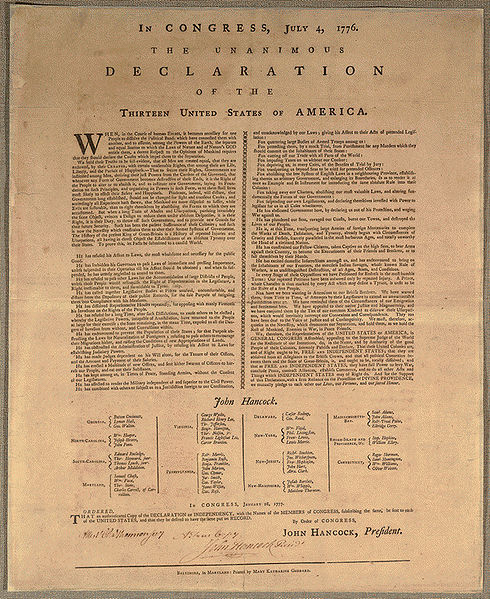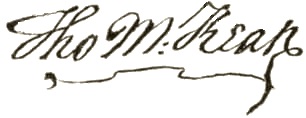Founding-Documents Blog Series: Part Four
Between now and July 4th, my blog features an ongoing series related to the history and signing of the Declaration of Independence…
. . . . . . . . . . . . . . . . . . . . . . . . . . . . . .
Evidence to Support An Incomplete Declaration of Independence
My novel, Carrying Independence, as covered in Part One, is fiction supported by the fact that not all 56 congressmen were in the same room on August 2nd, 1776 to affix their signatures to the Declaration. Two factors contributed to my being assured that there were men missing from that formal signing.
Ink Fades Based on the “Recipe”
“Timothy Matlack, a revolutionary leader and one of the official scribes of the Declaration of Independence, copied the official document,” writes Kelly Dickerson for LiveScience.com. “[The delegates] signed it in iron ink, which is made with an acidic chemical compound that bleeds into parchment. The staining makes the ink last longer.”
There was one batch of ink made for one hand-made silver inkwell holding the one pen used by 49 congressmen assembling in the one room at the State House on August 2nd, 1776. The subsequent signers used whatever ink was on hand—some of which are different recipes than Timothy Matlack’s. Those signatures have faded differently.
A Woman Proves the Last Signer of the Declaration
In Part Three of this series, I noted that Thomas McKean was the last man to sign the document. For proof, enter Mary Katharine Goddard (more on her in the next post).
In 1777, Congress decided to typeset a copy of the Declaration that included all the names of the signers. ALL their names. But it doesn’t.

Goddard volunteered to make the copies (shown above) in her print shop. Just like other printers, when she reproduced large documents it was customary to build the printing plates (text inserted, one letter at a time, into metal frames) with the original document before her for comparison.
She would read, and then she or an employee (a composer) would type-set that line. “When in the course of human events…” Type-set. “…it becomes necessary for one people…” Type-set. All the way down to the signatures. “John Hancock…” Type-set. “Thomas Jefferson…” Type-set.
In January of 1777, she completed 200 copies. One name, based on one signature, is missing. Thomas McKean.

Reader Insider Notes: The Goddard Broadside (of which, to date, 9 still exist) helped fix my time frame for inserting McKean into the novel. Also, when you discover a fact in history that suggests the very document your fictional protagonist, Nathaniel, is carrying ended up in the print shop of an historical figure… well, what would you do? Put him there working alongside her, of course! Here, an excerpt from the chapter informed by the research:
“So long as the document stays, so do you. I have to follow the original to replicate it exactly, and I was told your being here should be hush-hush.” Mary Katharine waggled the apron at Nathaniel, and he [reluctantly] took it from her. “Also, my pressman is ill, and my best type composer joined the Cause last week. It must be you.”
. . . . . . . . . . . . . . . . . . . . . . . . . . . . . .
For more history nerd posts like these, subscribe to the blog. Guest posts are welcomed and encouraged. Contact me for details.
For behind-the-scenes author-related news, giveaways, and to find out where I might be speaking near you, subscribe to my e-publication, CHASING HISTORIES.
